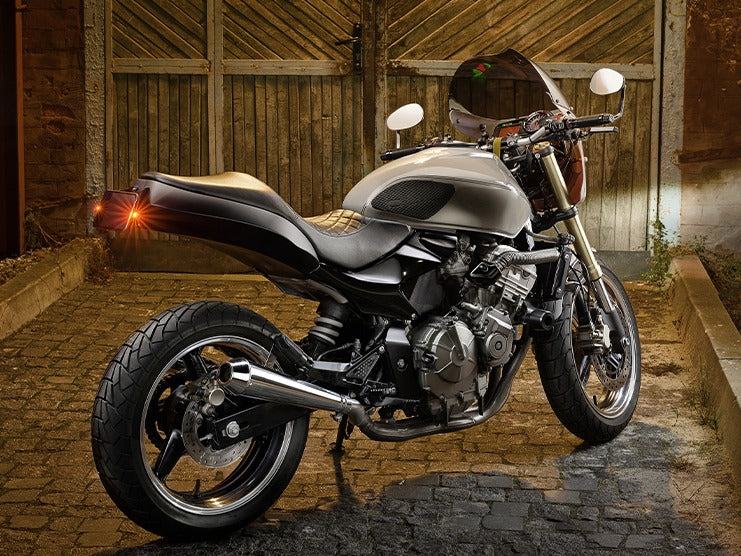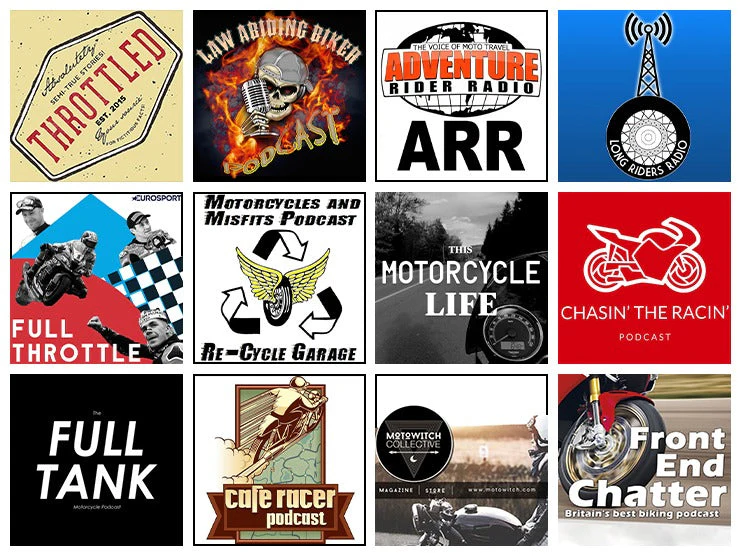Motorcycle storage is crucial, especially during the winter. Experts recommend storing a motorcycle in a garage with insulated layers.
But what should you do if you have to store a motorcycle in an unheated garage?
This article is a complete guide on how to store a motorcycle in an unheated garage and ways to warm an unheated garage.
Table of Content

1. Can You Store a Bike in an Unheated Garage?
When storing a motorcycle in a garage, experts suggest making sure the space is well insulated. But let's say your garage lacks insulation and is almost as cold as the outdoors.
It is true that things can still work even if your motorcycle garage is a little bit warmer than the surrounding air, but what if it isn't heated?
Consider a motorcycle garage that isn't heated or that has no insulation surrounding it. An uninsulated garage would result in your motorcycle experiencing the same problems if you had left your motorcycle outside.
Yes, keeping your motorcycle in an unheated garage would protect it from the sun's UV rays, but that is the only real benefit.
In an unheated garage, the chilly winter wind will get inside and accelerate the formation of ice crystals in the ethanol inside your motorcycle's fuel.
Initially, the formation of ice crystals won't cause much damage. However, it will eventually lead to the bursting of gasoline lines on the motorcycle.
Additionally, winter wind carries a lot of moisture, which can cause the motorcycle's exterior parts or any parts without layers of paint to become rusty.
If you are storing a motorcycle in an unheated garage, it is vital you add antifreeze to the motorcycle's petrol tank. This will help protect it from corrosion, eliminate scale formation, and aid in heat transfer.
2. Tips for Storing a Motorcycle in an Unheated Garage
2.1 Clean Your Motorcycle
Before you store your motorcycle in an unheated garage, it’s essential to clean and dry it thoroughly. Hose your bike down and use a cleaner made specifically for motorcycles to help get rid of any dirt.
After cleaning, it is vital to apply an anti-corrosion protection like GT85 or WD40 on all the exposed metallic areas.
It is also important to clean the garage before storing the motorcycle. The clear coat, polished metal, anodized aluminum, or stainless-steel finish can be damaged by grit, dirt, and bugs in the garage.
2.2 Take Care of Your Motorcycle’s Battery
When you store a motorcycle in an unheated garage, the battery can become cold. Batteries dislike the cold, so if they are stored in an unheated garage without being used for a long period of time, they will start to degrade.
The most common reason for contacting recovery services throughout the winter is dead batteries. To prevent this, you can either remove the battery and store it in a warm location or use a trickle charger or battery optimizer to maintain the battery's power levels.
It’s recommended to remove the battery if you are going to store a motorcycle for a long period in an unheated garage. Keeping the battery on the motorcycle during long-term storage without any precautions will ensure that it’s discharged when you take your bike out. If you choose to leave the battery on your motorcycle, make sure to turn on the bike and charge the battery every month.
The best way to keep your battery functional is to remove it and store it in a place that doesn't experience temperature fluctuations.
2.3 Lubricate All Moving Parts
If your motorbike is going to be stored for several months, be sure to apply a little oil to all the internal parts to prevent moisture buildup.
One method is to remove the spark plugs and then pour a tablespoon of oil into the holes. By rotating the back tire while the motorcycle is in gear, you can start the engine and coat the cylinder walls. Be careful when reinstalling the spark plugs.
Before storing a bike, everything that is usually lubricated should be done. Make sure the chain, cables, and controls are all freshly lubricated to endure the chilly, dry air in an unheated garage.
2.4 Plug Your Motorcycle’s Openings
We advise using rags to block all the air intakes if the motorcycle will be stationary for a long period of time. To prevent rodents or other pests from settling inside the bike’s exhaust pipes and air intakes, make sure to plug any open spaces by stuffing thick rags inside.
Although you can purchase muffler covers and similar accessories, you can achieve the same effect with plastic bags. Just remember to take these things off before you start your bike.
The main purpose of plugging the motorcycle's openings is to prevent excessive damping.
2.5 Top Off the Fuel Tank and Add a Fuel Stabilizer
A full fuel tank is necessary to prevent moisture buildup on the inside of the fuel tank’s walls.
Add a fuel stabilizer when the fuel tank is full, then ride the motorbike a short distance to the storage location. Avoid adding the fuel stabilizer at the storage space since it won't have a chance to properly mix with the gasoline.
Another option for storing a motorcycle in an unheated garage for a long time is to entirely empty the petrol tank. If you do this, you will have to line the tank with fogging oil to stop corrosion.
2.6 Change the Oil
Change the oil and replace the filter before storing a motorcycle in an unheated garage to prevent rusting. Old oil that sits in your motorcycle’s engine produces combustion byproducts like acids and moisture. If these byproducts are left in the motorcycle engine during storage, they can cause problems.
Moisture buildup can cause rust to form on the engine parts. Once rust begins, it’s really hard to stop. These rust particles can scour bearings and other motorcycle parts and can also flake off into the oil.
Acids in the oil can corrode the metal, resulting in engine wear and failure.
It’s best to remove all the used oil from the engine before storing it in an unheated garage to prevent these potential hazards.
2.7 Take Weight Off the Tires
Taking weight off the tires before storing your motorcycle in an unheated garage will prevent uneven tire wear. This can be accomplished by using motorbike stands.
Another option is to hoist the motorcycle on the front tire and keep all the weight off the back tire.
But if you have to leave your motorcycle on the ground, fill the tires to maximum PSI and line the ground with carpet to prevent moisture from making contact with the tires. Make sure to rotate the tires every few weeks.
2.8 Wax the Surface
The last step to do before storing a bike is to apply a fresh coat of wax. A coat of wax will help prevent rusting and moisture buildup. You can also use a spray like WD-40 to prevent the moisture, this will function the same as the wax.
2.9 Invest in a Good-Quality Motorcycle Cover
For additional protection, get a motorcycle cover that is specifically designed for your motorbike model. It will protect your motorcycle from unwanted scratches, dirt, debris, dust, and rodents.
3. Ways of Heating an Unheated Garage
3.1 Electric Space Heater
Electric space heaters are more powerful versions of portable heating units. If your garage has limited floor space, you can use an electric ceiling heater that can be mounted from the ceiling or on the wall.
Electric ceiling heaters can be easily installed on the ceiling or mounted on the wall. They radiate heat and keep your garage warm and make it well-suited for motorcycle storage.
| Pros | Cons |
|---|---|
| No ventilation required | Energy-efficient |
| Take longer to heat up a garage | Less effective in uninsulated garage |
3.2 Combustion Space Heater
Combustion space heaters are fueled by propane or kerosene. Most combustion space heaters run on a specific type of fuel but there are a few models that can run on multiple types of fuel.
| Pros | Cons |
|---|---|
| Can heat an average-sized garage quickly | Cheaper than electric space heaters |
| Ongoing fuel costs | Very noisy |
| Will continue heating garage even during power outages | May introduce moisture into the air and cause your vehicle to rust |
3.3 Ductless Mini-Split System
A ductless mini-split system is considered the most comfortable way to heat your garage. This system includes an air-handling unit installed inside the room and a compressor on the outside. This system is powered by electricity, with the current traveling between both components connected by a conduit.
| Pros | Cons |
|---|---|
| Can be suspended from the ceiling, mounted on the wall, or installed along the floor | Includes a remote for easy control |
| Higher costs | Have to clean filter monthly |
| Can keep garage cool during summer | Cannot produce a lot of heat |
3.4 Radiant Heating
A radiant heating system is installed as panels in the ceiling, walls, or under the floor. This system heats up the surface by using infrared radiation. Make sure to do research before purchasing as there are different types of radiant heating systems available.
| Pros | Cons |
|---|---|
| Extremely quiet | Very low operating cost |
| Expensive to install | Moisture may build up on the surface |
| Can heat garage more evenly |
4. Last Words
Storing a motorcycle in an unheated garage is not recommended, but if you don’t have any other option, you can apply the tips discussed in this article. Before storing a motorbike in an unheated garage, clean it, lubricate all the moving parts, stuff the motorcycle’s openings, top off the fuel, change the oil, remove the battery, take the weight off the tires, and wax the surface. You can also warm your unheated garage by using an electric space heater, combustion space heater, ductless mini-split system, or radiant heating system.













Leave a comment
All comments are moderated before being published.
This site is protected by hCaptcha and the hCaptcha Privacy Policy and Terms of Service apply.